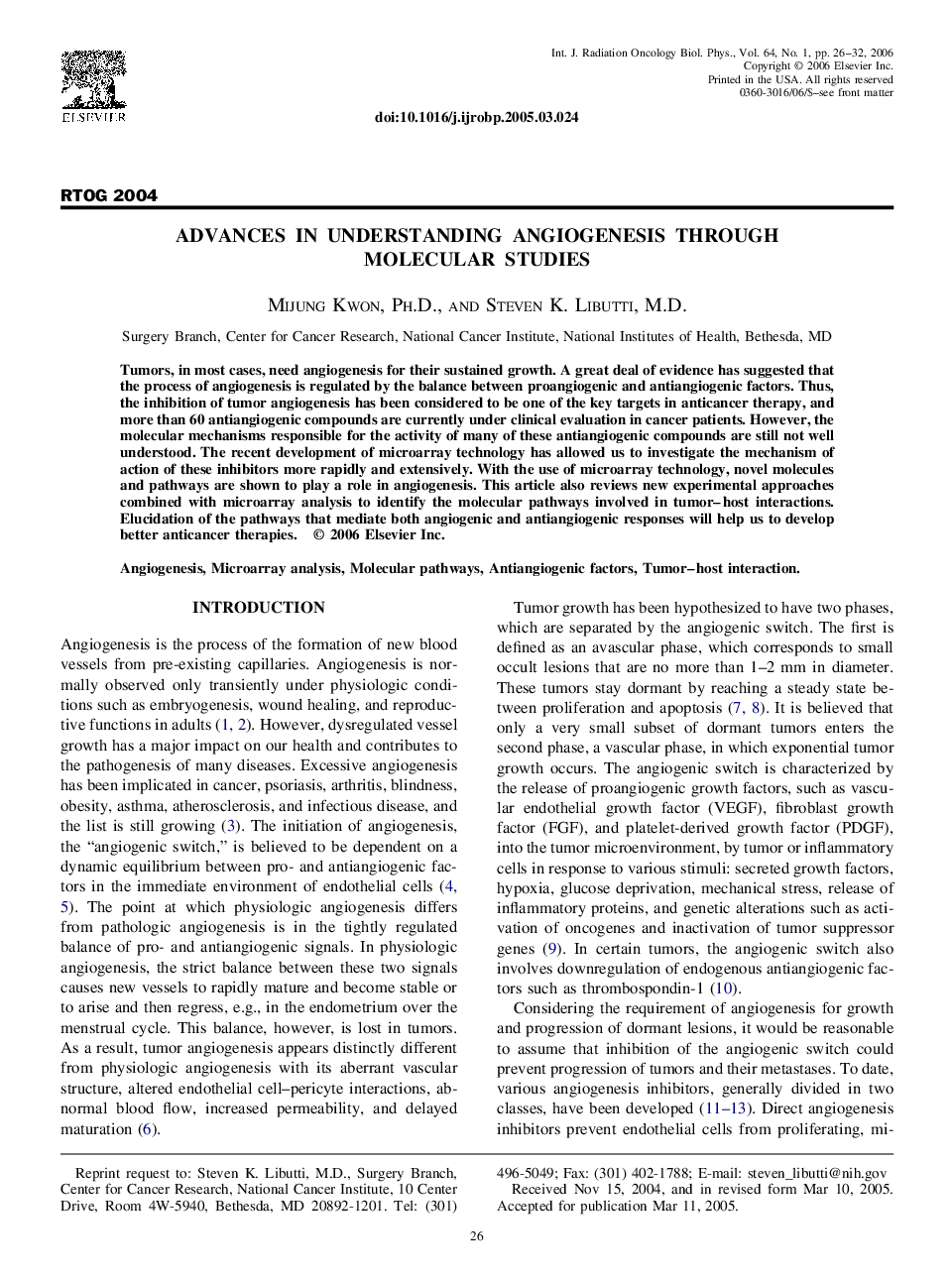| Article ID | Journal | Published Year | Pages | File Type |
|---|---|---|---|---|
| 8247503 | International Journal of Radiation Oncology*Biology*Physics | 2006 | 7 Pages |
Abstract
Tumors, in most cases, need angiogenesis for their sustained growth. A great deal of evidence has suggested that the process of angiogenesis is regulated by the balance between proangiogenic and antiangiogenic factors. Thus, the inhibition of tumor angiogenesis has been considered to be one of the key targets in anticancer therapy, and more than 60 antiangiogenic compounds are currently under clinical evaluation in cancer patients. However, the molecular mechanisms responsible for the activity of many of these antiangiogenic compounds are still not well understood. The recent development of microarray technology has allowed us to investigate the mechanism of action of these inhibitors more rapidly and extensively. With the use of microarray technology, novel molecules and pathways are shown to play a role in angiogenesis. This article also reviews new experimental approaches combined with microarray analysis to identify the molecular pathways involved in tumor-host interactions. Elucidation of the pathways that mediate both angiogenic and antiangiogenic responses will help us to develop better anticancer therapies.
Related Topics
Physical Sciences and Engineering
Physics and Astronomy
Radiation
Authors
Mijung Ph.D., Steven K. M.D.,
